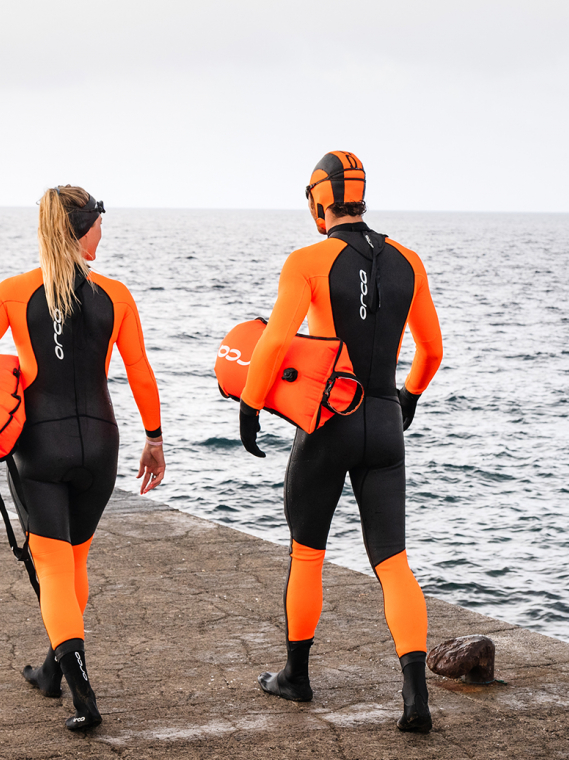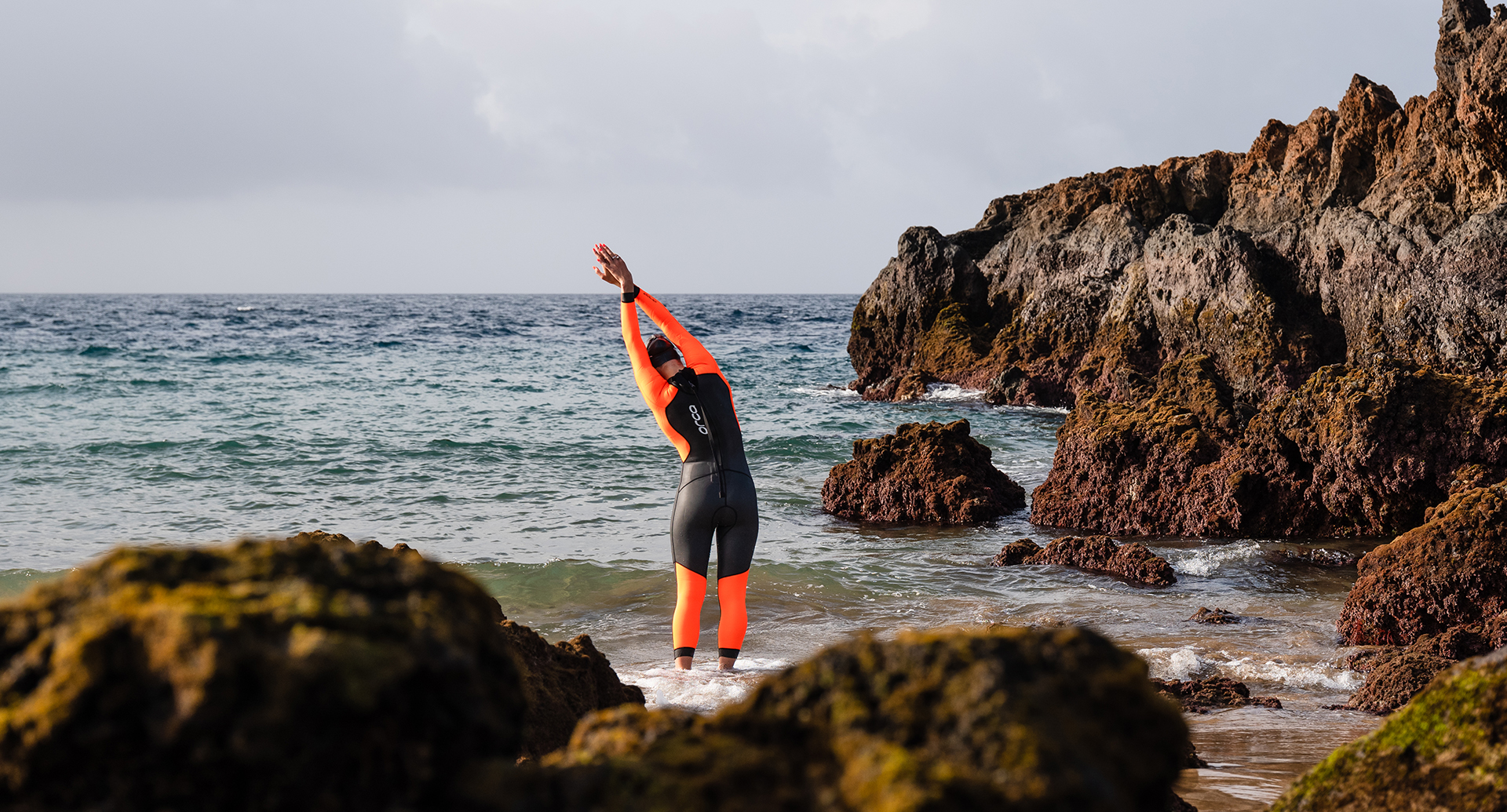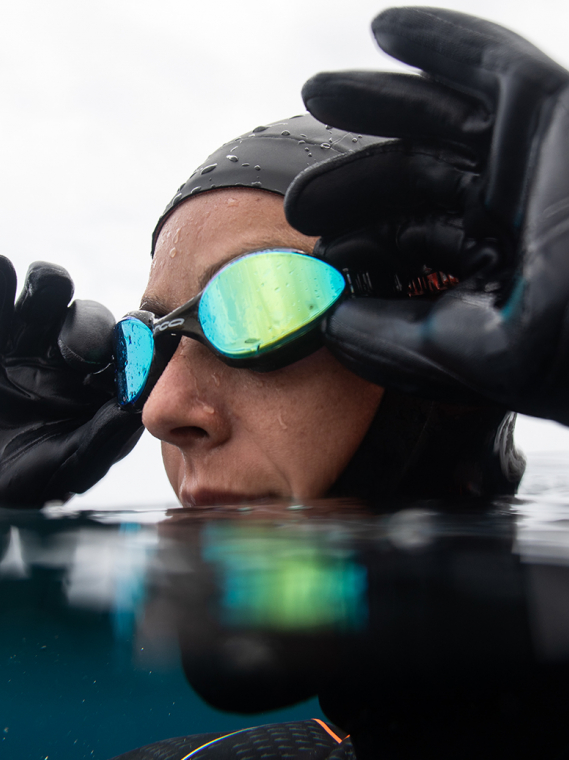
Safety and performance in the ocean – the mind of an ocean hero
Advanced
October 22, 2021
The most valuable tool to bring into every open water session is a Calm Mind.
Right now, it’s like this. Ocean, lake, pool, or pond – Calm, Cold, Waves, or Chop -training your brain will let you make the most of the hours

BRUCKNER CHASE - Founder and CEO of BC Ocean Positive, and Professional Ocean Lifeguard
Right now, it’s like this.
Ocean, lake, pool, or pond – Calm, Cold, Waves, or Chop - training your brain will let you make the most of the hours and meters spent working on speed, endurance, and strength.
“Mindful” has become the buzzword in social and traditional media as a way to live better for anyone and perform better for athletes. Too often, the media definition of the concept and the quick fix guides that teach the practice don’t align with the research. From our traditional world of physical training, think of a marathoner training for a personal best, logging just 1 mile of running each day at their goal pace. The athlete will get a feel for that marathon pace, but they will be unprepared to perform at that level for 26 miles. An actual Mindfulness Meditation practice or Neural Workout changes our brains and changes our relationship to what our brains do. Neural training changes the structure and function of your brain, increases the speed of signals between brain areas (emotion), increases activity in some regions (control, attention), and reduces activity in others (fear response). Swimming miles in the pool or ocean create beneficial changes in our body’s physiology.
Similarly, mindfulness meditation practice rewires our neural pathways allowing a positive difference in our capacity to perform higher. It is also not being held back by emotional responses to the stresses that can hit individuals moving through their day, the trails, or the waves. The right, ongoing practice can get you out of your head and help all that physical training do its thing.
A Mindfulness Meditation practice trains Breath Awareness, Body Awareness, Labeling of Emotions/Thoughts, Meta-cognition, and Self-Regulation. This practice can be as simple as sitting for close to thirty minutes at least three times per week. Sit more often to accelerate the long-term benefits, and don’t worry about overtraining the brain. For beginners, this also means following a qualified teacher’s guided meditation. One teacher, Noah Levine of Against the Stream, often repeated instruction is “Just be Uncomfortable” as he talks about the patience and acceptance a practitioner needs to develop the ability to SIT for thirty minutes, feeling their breath and watching their thoughts.
What awaits the athlete or non-athlete to maintain a Neural Workout regimen practiced as religiously as their more physical training program?

FOCUSING ON THE BREATH (THE FOUNDATION OF MINDFULNESS MEDITATION)
• Strengthens attention control – gathering and sustaining attention and concentration.
• Gathering and sustaining our awareness in the present moment.
• Opportunity to see thoughts and feelings come and go.
BODY AWARENESS
• Increased sensory awareness.
• Increased awareness of actual sensations and a decreased evaluation of them.
• Opportunity to see sensations come and go.
• Reduced mind wandering - reflecting on the past, focusing on the future, worrying about the intentions of others.

LABELING
• Non-judgemental awareness of emotions and thoughts – Labeled emotions can become less of a “Big Deal” and just something that comes and goes.
• Detachment – Space between “Us” and the emotion.
• Decreased emotional response – Reduces activity in parts of the brain associated with negative emotions (fear, anger).
META-COGNITION (WATCHING OUR MIND)
• Seeing thoughts/feelings come and go and not identifying with them.
• Changing how we relate to thoughts/feelings to see them as transient things that are constantly changing and not as things demanding a reaction.

SELF-REGULATION (SITTING WHEN WE DON’T WANT TO)
• Response inhibition: sitting still through the discomfort and despite boredom or distracting thoughts.
• Moving through the process of repeated conflict and control strengthens the part of the brain that contains the “Gas” and “Brake” pedals that together make up our ability to self-regulate our thoughts, feelings, and behavior.
HOW DOES THIS LOOK IN OUR MINDFULNESS MEDITATION TRAINED ENDURANCE MIND?
• Starting Line fears being unprepared and not ready – “I am prepared; those are just emotions.”
• Being pushed under by a competitor in a mass swim start – “I am OK. Breath, and swim.”
• The shock of hitting cold water – “My body is doing what it needs to do to prepare me to swim. Breath, and swim.”
• Missing a turn and easing off during that that weekly 1500-meter time trial – “It happens. I am good. Breath, and swim.”
Dryland neural workouts can be done in any weather and during pool closures, lockdowns, or injuries. Find the best thirty-minute slots in your week to train your brain. I don’t believe it has to be at 4 am sitting in the snow on a mountain peak because, in the words of Noah Levine, “I don’t live my life at 4 am.”
Ready to train your brain to take the lead on how you put your toe in the water?
• UCLA Heath, UCLA Mindful Awareness Research Center – Free Drop-in Meditations: https://www.uclahealth.org/marc/free-drop-in-meditation
• Against the Stream Meditation Center weekly guided meditation and teaching: https://www.againstthestream.com/dharma-talk-and-meditation-podcast

ABOUT BRUCKNER CHASE
Founder and CEO of BC Ocean Positive, and Professional Ocean Lifeguard Bruckner Chase is an internationally recognized ocean advocate and professional waterman whose athletic accomplishments and adventures include some of the most challenging environments and harshest conditions on land and by sea. His athletic pursuits and innovative, evidence-based initiatives span from American Samoa, to Poland, to the Jersey Shore and provide opportunities to empower, as well as positively impact individual and community behavior towards our shared aquatic environments. He currently works with NOAA National Weather Service as their coastal safety, science and conservation advisor while also working on groundbreaking, inclusive surf lifesaving sports programs for para-athletes. His current project with NOAA, “Wave Safe with Bruckner Chase” is a multimedia campaign that teaches the philosophy, mindset and actions that can protect any person, on any shore.
He loves working in Australia and American Samoa and is always eager to get back to these places he considers “second homes”. Join Bruckner in protecting our oceans, and their inhabitants, and learn more at bcoceanpositive.org.


October 22, 2021
The most valuable tool to bring into every open water session is a Calm Mind.

September 24, 2021
Sighting is only the beginning. The key to faster, more efficient, and potentially shorter open water swims is learning to look beyond the buoys to be...

August 26, 2021
Orca safety ambassador, and internationally recognized ocean advocacy expert, Bruckner Chase, talks to us about important considerations when open wat...